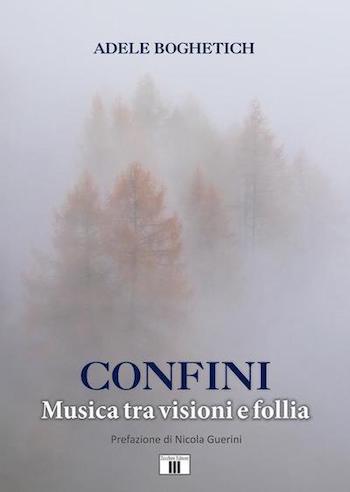- Details
-
Category: BOOKS
-
Published on Wednesday, 29 June 2022 17:26
- Elena Lattes


What is the connection between music and religion? And how did the musicians of the past position themselves towards spirituality and divinity?
To analyze these and other similar questions is Adele Boghetich in “Borders. Music between visions and madness”Published by Zecchini Editore with the preface by Nicola Guerini.
The author examines some important composers, almost all belonging to the German area, and for each one, one or several works.
The first is Hildegard von Bingen, a mystic who lived at the beginning of the second millennium. The youngest of ten children, of a noble Franconian family, she took lessons from a cloistered nun. From childhood she had apparitions and still very young she entered the order of the Benedictines.
He founded a monastery and maintained close correspondence with rulers, bishops and popes to whom he denounced the corruption and greed of some members of the Church. She was the author of the “Liber divinorum operum“In which he expressed his cosmological theories” of the creation of the world through Love, the morphological vision of the Earth, the history of Salvation “and”Symphonia harmonie celestium revelationum“, An anthology of seventy-seven spiritual Carmina, that is a sort of highly poetic texts, directly inspired by the” angelic “melodies that Hildegard believed to perceive during the visions and in which the divine strength and the vivifying and renewing power of other figures are exalted catholic, as well as the motherhood and femininity of Mary.
The second is Johann Sebastian Bach, who “spent an honest, intense and industrious life among the bureaucracy of Courts and Municipal Councils … at the ‘service’ of music”. Music which, for the composer, according to the author, “consolidates the philosophical relationship between the human dimension and the divine dimension in its double ‘language’ of prayer, with which man turns to God and with which the Absolute bursts into the finite “.
Among his compositions, “Gottes Zeit”Is the work that most embodies this philosophy. Composed at just 22 years old, it is part of one of the 195 sacred Cantatas and represents a “happy renewal“,” Far from the conventions of tradition to recreate, in the harmony of musical relationships, the divine Harmony “.
It is distinguished from the other cantatas, according to Bogetich, for the poignant emotion it creates thanks to the complex loaded with different feelings and also for the revelation of the rational, mathematical and enlightenment inclinations of the young Bach.
The third examined is Mozartwith its famous “Magic Flute”, Revealing the struggle against the forces of evil and in which there are the eternal contrasts between virtue and vice, light and darkness, wisdom and foolishness.
It follows Beethoven, who considered music “the point of convergence of all the arts, capable of expressing ‘the inexpressible’ of the highest and noblest sphere of the spirit” and for this he made it “a real ‘religion’ of life”, pouring out his own anxieties, but also “a deep love for nature and the cult of freedom”. Among his works there Ninth symphony it would be its emblem. After summarizing its genesis and history, the author analyzes its text and both rhythmic and instrumental structure.
It is then the turn of Schubertwith “Winter trip”, Whose icy atmosphere reflects“ a profound existential disillusionment, which soon becomes a constant theme of poets and musicians ”.
TO WagnerBoterich dedicates two chapters, one for “Tristan and Isolde“And the other for”Parsifal“While of Mahler examines three works, the Third and the Eighth Symphony and “The Song of the Earth“.
Of Richard Strauss the author analyzes “Thus spoke Zarathustra”, Introducing it and connecting it, obviously, to NietzscheAnd “Metamorphosis”, A Requiem written in 1945, in which Strauss, now in his eighties, expresses all his pain and“ the chill of his soul, which murmurs hushed and silent on the ruins of lost cities (…) ”.
The penultimate chapter is a tribute to the Italian composer and conductor Francesco D’Avaloswho passed away in 2014, and his vision of art and the contemporary age. At the end of the short essay there are the texts of the Lieder in German with the Italian translation alongside.
As you can easily guess, therefore, “Borders”Is an essay not easy to understand for the great majority of readers, who expertly links music to philosophyplacing them in the historical and social context of the individual composers.
‘Borders. Music between visions and madness’ by Adele Boghetich

